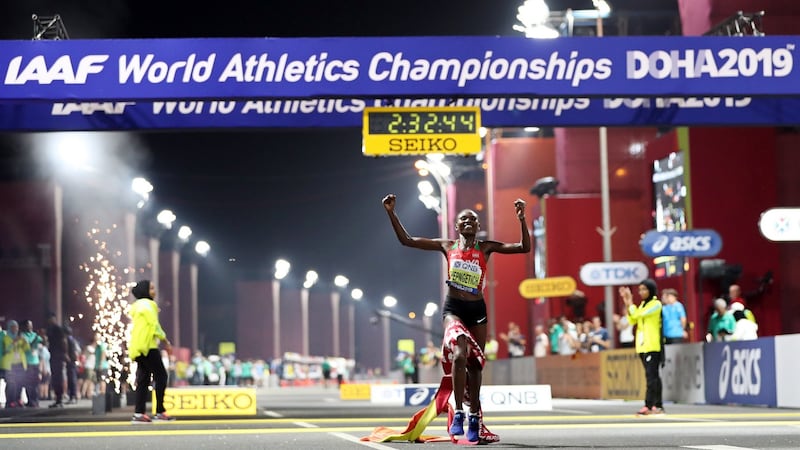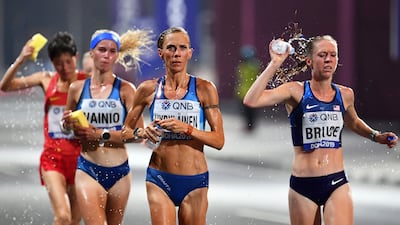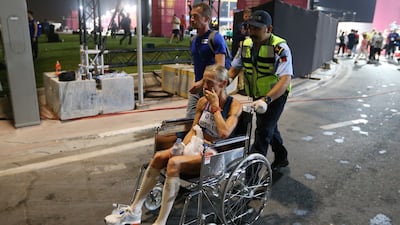Long before any competitors dropped out here in Doha, their bodies tormented and broken by the heat as Friday night turned into Saturday morning, the public-address announcer sold the race as a unique event, as something to celebrate, even: the very first midnight marathon at a global competition.
Really, the late start of the women’s marathon at the world track and field championships – 11.59pm local time, to be precise – was a knowing concession to the elements, to conditions that tend to hover between molten and flambé. By the time the race started, the temperature had cooled to a balmy 32 degrees.
Officials from the IAAF went to great lengths ahead of the event to stress how much they had devoted to athlete safety. Extra water stations. Extra medical personnel. For the runners themselves, who did six laps of a seven-kilometre course, the race proved extra painful.

Extra painful for perhaps everyone but Ruth Chepngetich of Kenya, who celebrated her victory in 2 hours, 32 minutes, 43 seconds by raising her fists and jogging some more. Others were not so enthusiastic.
Most of the athletes competing this week are luxuriating in the cool climes of Khalid International Stadium, an open-air structure that is miraculously air-conditioned. Long jumpers? Sprinters? Hurdlers? They have it easy.
Only the marathoners and racewalkers are stuck outside, plodding along a stretch of roadway adjacent to the Persian Gulf.
The women in the marathon got the first crack at entering this late-night caldron – racewalkers, including Ireland's Brendan Boyce (Saturday, 9.30pm), are scheduled to compete this weekend, while the men's marathon is set for next Saturday – and the scene was surreal. There appeared to be nearly as many reporters and officials as spectators. It was so quiet at times that a drone sounded as loud as a helicopter.
It was not a race for the meek, and everyone knew it: the runners, who shed sweat with every stride; the photographers, who mopped condensation off their lenses; the vest-wearing brigade from the Qatar Red Crescent, the medical professionals who kept a close eye on the proceedings with wheelchairs and stretchers at the ready; and even the modest clusters of spectators, who peered each time the field came sweeping around a corner for another lap of the course.


But those hard facts did not dissuade a couple of runners from making an early break for it, if only for a few metres and a sliver of the spotlight. Russia’s Sardana Trofimova, who was competing as an authorised neutral athlete, tried to keep the pace honest about 10 minutes into the race before she faded back into a pack that was already beginning to dissolve.
About 40 per cent of the runners dropped out. Among those who finished were Roberta Groner, a 41-year-old full-time nurse from New Jersey and a mother of three. She finished sixth.
“Probably the hardest conditions I’ve ever raced in,” she said.
Probably?
“Definitely,” she said.
One of the keys, Groner said, was hydration. She drank copious amounts of fluids days before the race, she said. She also prepared for the midnight start by staying on US eastern time after arriving in Doha this week. “It’s for my children,” Groner said as she choked back tears, “to show them that you can do things with hard work.” – New York Times










